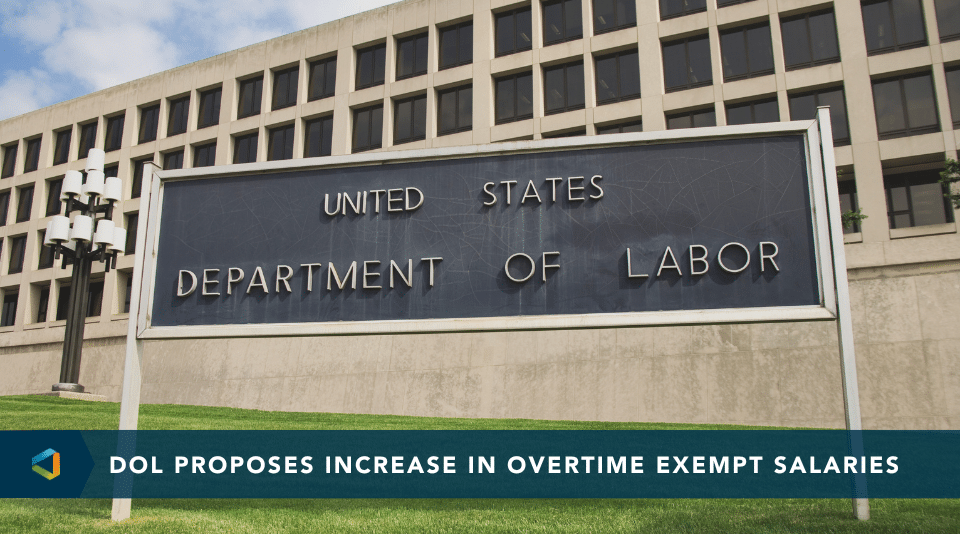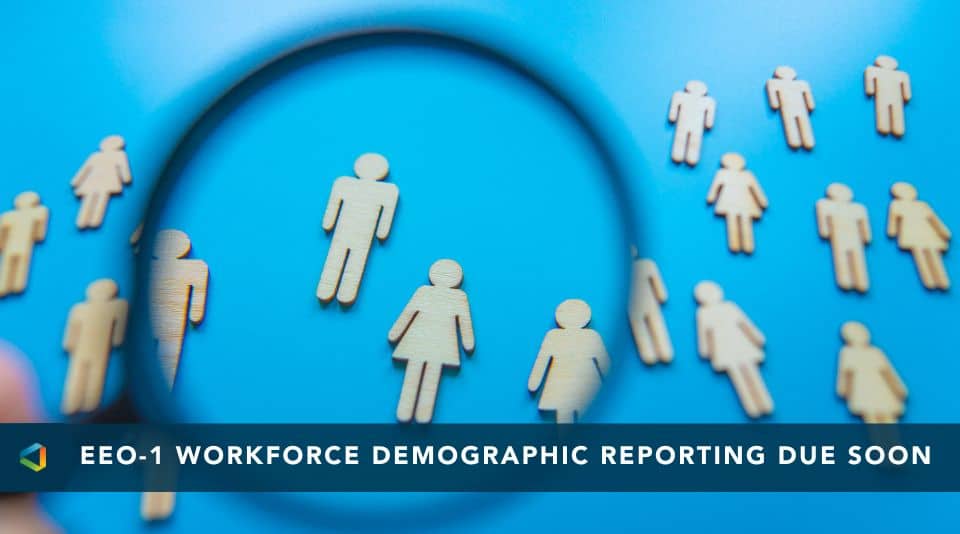Compliance Confidence
The Wait is Over! EEOC Issues New Proposed Wellness Regulations
The Wait is Over! EEOC Issues New Proposed Wellness Regulations
1.27.2021 Update: The new Biden administration issued a Regulatory Freeze Pending Review which withdraws with rule until the new agency leadership can review it.
After years of waiting, as a follow-up to its June 2020, Public Meeting on Wellness Notice of Proposed Rulemaking, on January 7, 2021, the EEOC finally issued new proposed wellness rules under the Americans with Disabilities Act (ADA) and the Genetic Information Nondiscrimination Act (GINA), to replace its previously vacated rules. On, February 12, 2021, the EEOC announced that it was withdrawing these rules.
The proposed rules track closely to changes that were discussed during the public meeting while adding additional clarifications.
A Familiar Incentive Limit Reemerges
New Safe Harbor Interpretation
The ADA safe harbor allows plan administrators to establish, sponsor, observe or administer the terms of a bona fide benefit plan that are based on underwriting risks, classifying risks, or administering such risks that are based on or not inconsistent with State law. In its public hearing, the EEOC newly interpreted this safe harbor to include certain wellness programs that are part of, or qualifies as, a group health plan. The EEOC carried this interpretation through to the proposed rules.
A wellness program is part of a group health plan if:
- the program is only offered to employees who are enrolled in an employer-sponsored health plan;
- any incentive offered is tied to cost-sharing or premium reductions (or increases) under the group health plan;
- the program is offered by a vendor that has contracted with the group health plan or issuer; and
- the program is a term of coverage under the group health plan.
Under the proposed rules, when a wellness program offers incentives in exchange for employees to engage in certain activities and achieve goals to reduce health risks, the wellness program will be considered to be “classifying risks” and “administering risks” if the program actually uses the aggregate data it obtains to help employees improve their health. The EEOC makes a distinction among the types of programs it deems as improving or not improving health.
Improves Health |
Does Not Improve Health |
| Physical exam and biometric screenings where results are measured and tracked over time. |
|
The 30% Limit Returns
For any health-contingent wellness program that is part of a group health plan (fully-insured or self-insured), the EEOC is maintaining the maximum incentive of 30% of the cost of the insurance coverage (50% for tobacco-related programs). This mirrors the limit set in the previously vacated rules to the extent that it is 30%. However, the agency will now calculate 30% based on the total cost of coverage, like the ACA/HIPAA wellness rules. In fact, the EEOC is adopting all five ACA/HIPAA requirements for a health-contingent wellness program tied to a health plan.
Under the ADA, any health-contingent program that is part of a group health plan must:
- not exceed an incentive limit of 30% of the total cost of coverage;
- be designed to promote health and prevent disease;
- offer an opportunity to qualify for the reward at least once per year;
- offer and disclose a reasonable alternative standard (RAS) for those unable to meet the original standard; and
- be voluntary.
The incentive limit depends on whether dependents are permitted to participate in the wellness program and earn an incentive. If a dependent is not permitted to participate in the wellness program, the cost of the dependent’s coverage may not be used in the total cost for the employee.
Any program that fails to meet the above requirements is limited to the de minimis incentive limit. Wellness programs that do not include disability-related inquiries, such as general health or educational information, as not subject to these proposed rules.
Ensuring a Voluntary Program through De Minimis Incentives
Similar to prior rules, all wellness programs that include disability-related inquiries, medical exams, and/or information about the manifestation of disease or disorder must be voluntary, meaning that employers may not:
- require employees to participate in wellness programs;
- deny employees access to health coverage under any of their group health plans or particular benefits packages within a group health plan for not participating in the wellness program;
- limit coverage under their group health plans for non-participating employees (except to the extent the limitation may be the result of forgoing a permissible financial incentive – e.g. a higher deductible);
- take any other adverse action against employees who choose not to answer disability-related inquiries or undergo medical examinations; or
- retaliate against, interfere with, coerce, intimidate, or threaten employees.
- Water bottle
- Gift card of modest value
- $50 per month premium differential
- Annual gym membership
- Airline tickets
- be written so that the individual from whom the genetic information is being obtained is reasonably likely to understand it;
- describe the type of genetic information that will be obtained and the general purposes for which it will be used; and
- describe the restrictions on disclosure of genetic information.
- The types of incentives that should and should not be considered de minimis. For example, should de minimis incentives include additional examples other than a water bottle and a gift card of modest value? Would it be helpful to provide examples of incentives other than those given in the interpretive guidance (e.g., a paid annual gym membership or free airline tickets) that would violate the de minimis limit?
- Whether notice should be required even where the program is allowed to offer no more a de minimis incentive.
- Whether different or additional factors would be more useful in determining when a wellness program is part of a group health plan for purposes of the ADA wellness rule.
- How employers use the information from participatory programs that simply require employees to complete a health risk assessment or undergo biometric screening without requiring employees to achieve any particular health outcomes.
- What kind of information employers obtain from health risk assessments and biometric screenings and how they actually use the aggregate data they collect.
- The EEOC’s conclusions concerning the benefits and burdens of the proposed revisions.
- The EEOC’s estimates of the number of small entities affected, as well as the cost to those entities.
- Whether employers are offering the maximum allowable incentive established by the 2013 HIPAA regulations for health-contingent wellness programs that are part of or qualify as group health plans in return for family members’ provision of information about their manifestations of diseases or disorders to wellness programs.
- Whether there are research-based articles, studies, or surveys about the frequency with which employer-provided wellness programs are giving incentives to employees in return for their family members providing information about the family members’ manifestation of disease or disorder, as well as the specific level of those incentives.
- The impact, if any, that the adoption of a de minimis incentive level under Title II of GINA would have on employer-provided wellness programs that currently use a higher incentive and the relevance of such impact.
- Whether additional examples of incentives beyond the examples of a water bottle and a gift card of modest value should be provided to illustrate what would or would not be considered de minimis.
- The rationale outlined above for interpreting Title II of GINA to limit employers to providing no more than a de minimis incentive to an employee in return for the employee’s family member providing information about the family member’s manifestation of disease or disorder to a wellness program.
- Possible justifications under Title II of GINA for adoption of a higher than de minimis incentive level for health-contingent wellness programs that are part of or qualify as a group health plan.
- The maximum amount of such an incentive.
- Any issues related to this proposed rule.
To ensure that programs remain voluntary, the proposed rules require that any incentives for participation in a health-contingent wellness program that is not part of a group health plan must be “de minimis.” Examples include:
De Minimis |
Not De Minimis |
|
|
|
Family Participation
In a significant shift from the prior rules, the proposed GINA rules would apply the de minimis limit to wellness programs for any family members participating in the group health plan that provides information about their manifestation of diseases or disorders. The proposed rules continue to prohibit any incentives in exchange for employee-provided information about the employee’s family medical history or other genetic information, and programs outside of the wellness program. In addition to the de minimis incentive, employers may offer incentives to individuals with current health conditions and/or to individuals whose lifestyle choices put them at increased risk of developing a condition through disease management programs that are not conditioned on providing genetic information.
Additional Privacy Protections
Under the proposed rule, employers (not just the group health plan like HIPAA) will be limited to receiving aggregated/de-identified medical information from the wellness program, except as needed to administer the program and other limited purposes. Additionally, employers cannot require employees to agree to the sale, exchange, sharing, transfer, or other disclosure of medical information, or waive confidentiality protections as a condition of participating in the program.
Note: The EEOC removed the prior rules’ requirement that employers issue a separate ADA notice that describes the type of health information that the program will obtain and the purposes for which the information is used. However, the proposed rules under GINA still require that prior to collecting genetic information as part of a wellness program, the employer must obtain knowing, voluntary, and written authorization from the individual. The authorization must:
During the public meeting, an EEOC Commissioner also proposed requiring an employer to ask third-party wellness vendors about their privacy and confidentiality practices, but this requirement does not appear as an affirmative requirement in the proposed rules. Protected health information (PHI) from health-contingent wellness program is, however, subject to HIPAA’s privacy and security requirements. Therefore, covered entities should still obtain a business associate agreement (BAA) with third-party vendors and comply with all other applicable HIPAA provisions.
Wellness Compliance Summary with Proposed Rules
Program Type |
Participation – No Health |
Participation – Health Contingent |
Activity – Health Contingent |
Outcome – Health Contingent |
| Amount of Reward/Penalty | General (HIPAA/ACA): Unlimited Disability-Related (ADA): Unlimited Dependent Child/Spouse (GINA): Unlimited |
General (HIPAA/ACA): 30% of TOTAL Cost of Coverage Disability-Related (ADA): 30% of TOTAL Cost of Coverage (if tied to the health plan) De minimis (if not tied to the health plan) Dependent Child/Spouse (GINA): De minimis |
General (HIPAA/ACA): Unlimited Disability-Related (ADA): 30% of TOTAL Cost of Coverage Dependent Child/Spouse (GINA): De minimis |
General (HIPAA/ACA): 30% of TOTAL Cost of Coverage (50% Tobacco) Disability-Related (ADA): 30% of TOTAL Cost of Coverage Dependent Child/Spouse (GINA): De minimis |
| Opportunity to Earn Reward | Unrestricted | At Least Once Per Year if tied to the health plan | At Least Once Per Year | At Least Once Per Year |
| RAS Required | No | Yes Participant must earn reward for same plan year RAS satisfied; Retroactive Credit |
Yes Participant must earn reward for same plan year RAS satisfied; Retroactive Credit |
Yes Participant must earn reward for same plan year RAS satisfied; Retroactive Credit |
| Physician Involvement | Require Verification: No Must Accommodate: Not Applicable |
If tied to the health plan- Require Verification: Yes Must Accommodate: Yes |
Require Verification: Yes Must Accommodate: Yes |
Require Verification: No Must Accommodate: Yes |
| Notice Requirement | General (HIPAA/ACA): No Disability-Related (ADA): No Child/Spouse (GINA): Yes |
General (HIPAA/ACA): RAS if tied to the health plan Disability-Related (ADA): No Child/Spouse (GINA): Yes |
General (HIPAA/ACA): RAS Disability-Related (ADA): No Child/Spouse (GINA): Yes |
General (HIPAA/ACA): RAS Disability-Related (ADA): No Child/Spouse (GINA): Yes |
| Must Be Voluntary | Yes | Yes | Yes | Yes |
Share Your Thoughts with EEOC
The EEOC is requesting guidance on the proposed rules generally, but specifically seeks guidance regarding:
ADA Proposed Rules (RIN number 3046-AB10)
GINA Proposed Rules (RIN number 3046-AB11)
These areas where the EEOC is specifically seeking comments are ones to keep a close eye on for changes between the proposed rules and final rules that it issues after the comment period.
To submit comments, visit the Federal eRulemaking Portal at http://www.regulations.gov/ and follow the instructions to submit a comment. You may also mail or fax comments to Rachel V. See, Acting Executive Officer, Executive Secretariat, Equal Employment Opportunity Commission, U.S. Equal Employment Opportunity Commission, 131 M Street NE., Washington, DC 20507, (202) 663-4114.
Comments must be received on or before 60 days from the publication of the proposed rule in the federal register.




